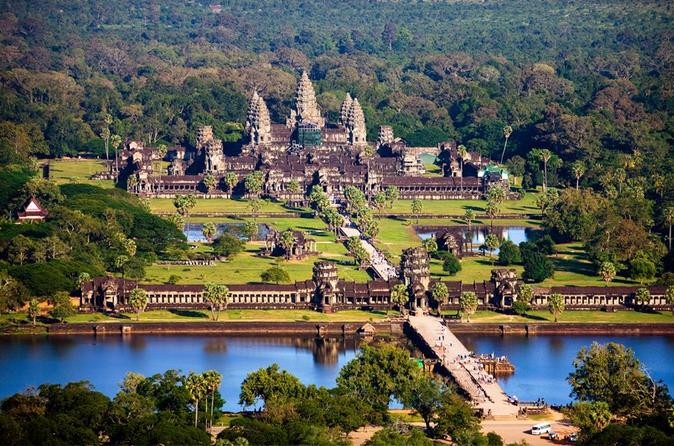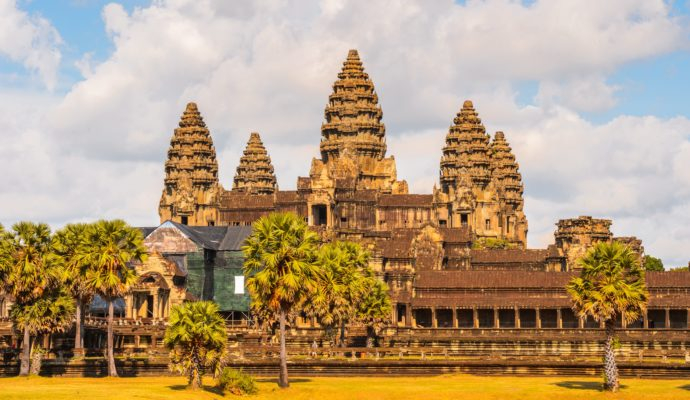Angkor Wat, Cambodia
Angkor Wat is a temple complex in Cambodia that is the world's biggest religious monument, covering 162.6 hectares (1,626,000 m2; 402 acres). Angkor Wat was consecrated to Vishnu for the Khmer Empire, breaking with the Shaiva practice of prior kings.
Suryavarman II, the Khmer King, erected it as his state temple and eventual mausoleum in Yaodharapura, the Khmer Empire's capital, in the early 12th century. The temple-mountain and the subsequent galleried temple are the two primary plans of Khmer temple construction that Angkor Wat incorporates. Within a moat more than 5 kilometers (3 mi) long and an outside wall 3.6 kilometers (2.2 mi) long are three rectangular galleries, one raised above the next, to resemble Mount Meru, the home of the devas in Hindu mythology. A quincunx of towers lies at the heart of the temple. Scholars disagree about the significance of Angkor Wat's orientation to the west. The temple's architecture is recognized for its grandeur and harmony, as well as its large bas-reliefs and countless devatas gracing its walls.
Angkor Wat is the only temple at the site that has remained an important religious center since its creation, and it is also the best-preserved. The temple represents the pinnacle of Khmer architecture's high classical style. It is one of the most important Buddhist pilgrimage destinations in Cambodia and around the world, having played a key part in Cambodia's conversion to Buddhism. It has become a national symbol of Cambodia and is the country's most popular tourist attraction. Hosting more than two million visitors a year, this artistic masterpiece is one of the most beautiful world heritage sites in the world.
Location: Siem Reap, Cambodia














